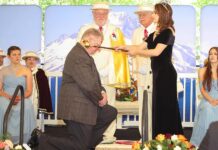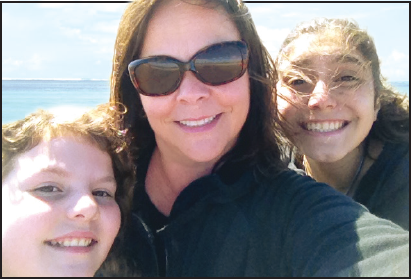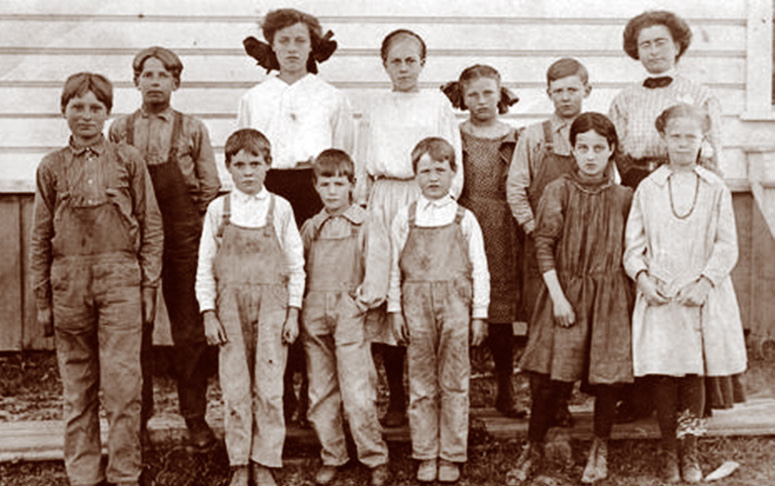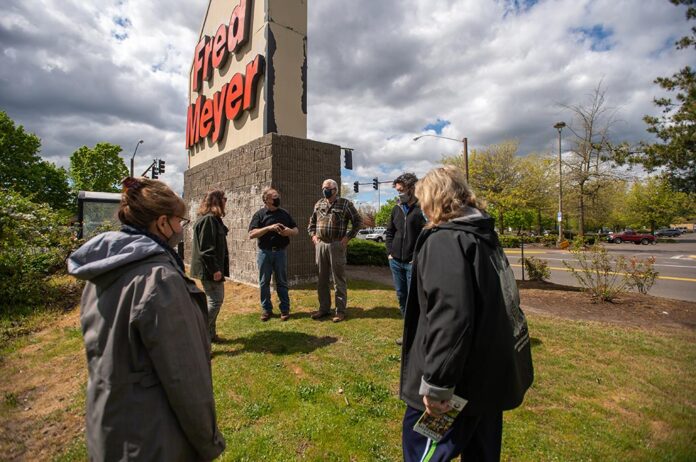
Ice Age Foundation also hopes to dig for mastodon fossils
Thanks to an unexpected discovery at a Lake Oswego construction site, a new historical artifact will soon be on display outside the Tualatin Heritage Center.
A two-ton chunk of rhyolite, a type of igneous rock that is not normally found in Oregon, is now believed to have been deposited in the Willamette Valley by the Missoula Floods around 15,000 years ago. It was found during excavation of the new Lakeridge Junior High School site in Lake Oswego. Scott Burns, a Professor Geology at Portland State University and the President of the Tualatin Ice Age Foundation Board, said the find is unique in his many years of research experience and will be a key display piece for the future visitor center the Foundation hopes to one day open in Tualatin.
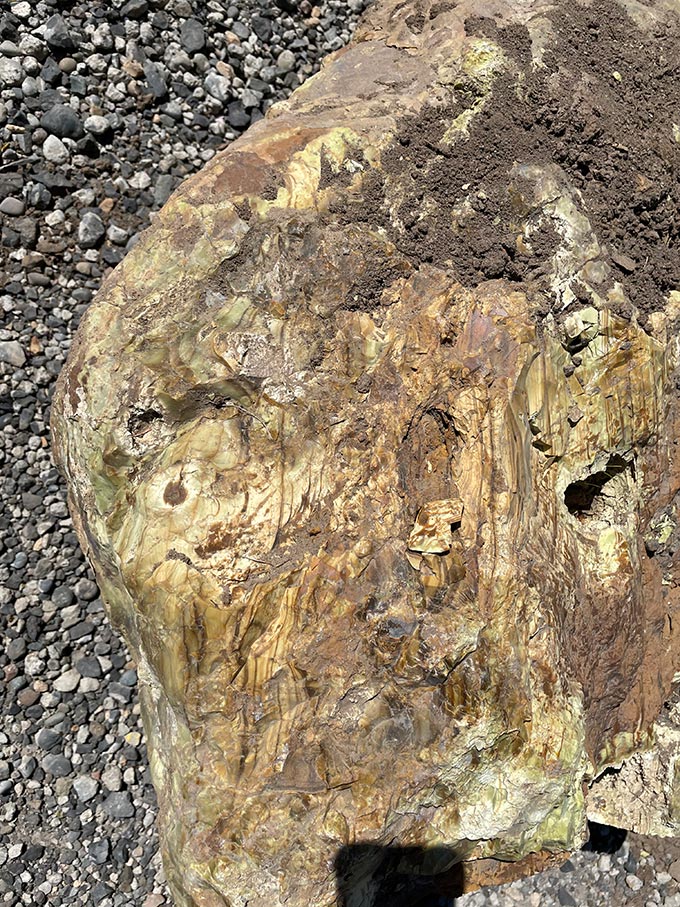
“We believe it’s an ice-rafted glacial erratic,” Burns said. “That is, it fell onto the glaciers up in British Columbia, Alberta, Canada or Montana and then was part of the dam that blew apart in the Missoula Floods and it floated down here and was then dropped.
“I’ve never seen an ice-rafted erratic like this, not at all.”
The rhyolite is a mottled yellow, green and brown boulder roughly three feet by three feet by four feet in size. It was found by a Jacob Parker, keen-eyed construction superintendent with Skanska USA Building, the general contractor for the Lakeridge Junior High School project, following the excavation of the site. Parker called Rick and Sylvia Thompson, the president and secretary of the Lower Columbia chapter of the Ice Age Flood Institute, to notify them of the discovery. The Thompsons, in turn, notified Burns, who immediately made his way to Lake Oswego to check it out for himself.
“I went over and took a look at it and I was very excited,” Burns said. “I said we need to have this because it’s so different and we’ve never seen an erratic like this one.”
Because there are hundreds of excavated boulders that still need to be removed from the building site, talks between the Foundation and the Lake Oswego School District quickly produced an agreement that would allow the Foundation to take possession of the boulder.
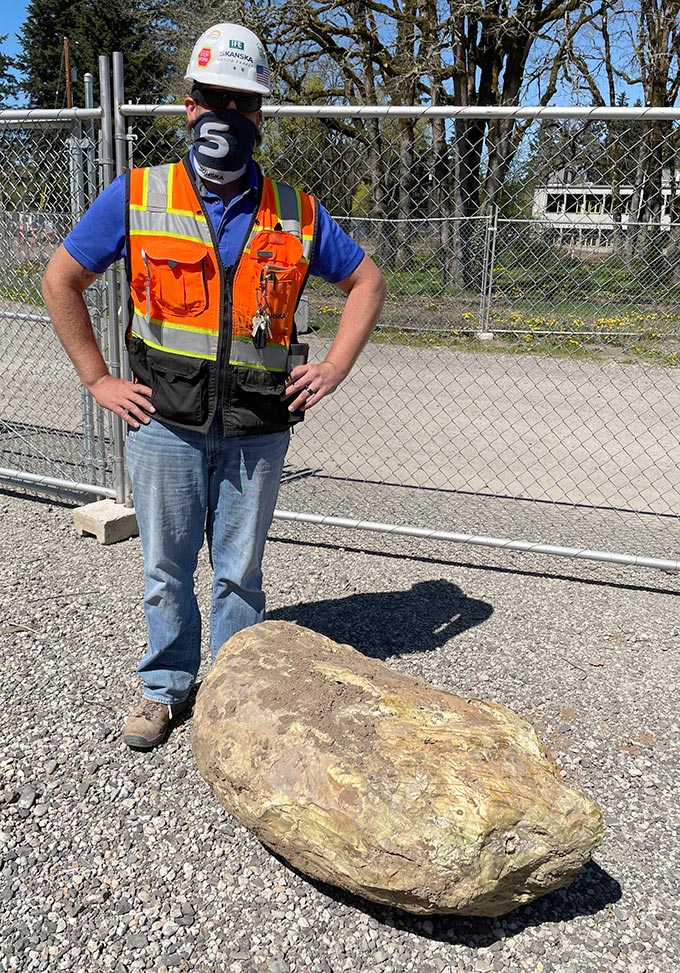
Fellow Foundation board member Yvonne Addington then arranged for Wilsonville firm Brian Clopton Excavating to transport the specimen from Lake Oswego to the Heritage Center. This will be done as soon as the school district and Foundation agree on a date but is tentatively expected to happen in the next few weeks.
“We’re all set to go,” Burns said. “We give him a date and he will be there and he will move it.”
Portland State University, the University of Oregon and the Ice Age Floods Institute, Lower Columbia chapter have, for several years, been assisting the Tualatin Historical Society in researching the prehistory of Tualatin. The National Park Service long ago identified Tualatin as a key Ice Age Floods National Geologic Trail hub. To date, the City has made efforts to display the area’s ice age prehistory by the development of the Tualatin River Greenway Trail.
“We’re a small facility and we pride ourselves on the exhibits we have both inside and out,” said Ross Baker, President of the Tualatin Historical Society, which operates the Heritage Center. “The ice age stuff has lent itself to both, because inside we have mastodon tusks and other information, but outside is cool because the erratics are there along with the heritage garden, and the overall blend is always improving. Every time those guys get excited it’s always good for us.”
New dig for mastodon remains planned
The discovery of an ice age erratic is not the only bit of news happening right now when it comes to the ancient history of Tualatin.
A group of Tualatin Ice Age Foundation Board members gathered on Sunday, March 25, in the parking lot of the Tualatin Fred Meyer to look at the possible site of a new excavation effort aimed at finding the remains of mastodon and other species that once roamed the area.
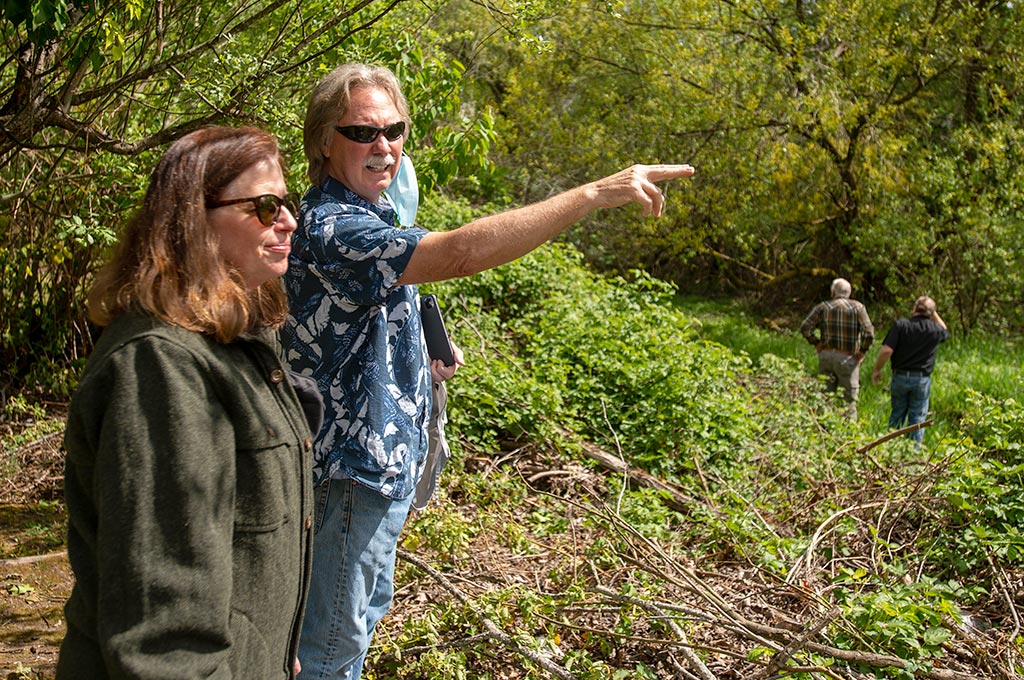
The new dig seeks to recreate the earlier efforts of paleontologist John George, who dug in the same area in the early 1960s.
“The idea is let’s do a dig this summer,” Foundation Board Member Paul Hennon. “Yvonne and I have been out here numerous times. (We are) focused on the site of the original dig. The question always is exactly ‘Where is that site?’”
The Foundation hopes to undertake initial auger coring and drilling by July, Hennon said, but first must determine where to start, as well as what, if any, permits would be needed from the City, County or other jurisdictions. Which entities are involved will also depend on how close the drilling is to a small, unnamed creek that lays between the Fred Meyer parking lot and the Comfort Inn and Suites motel to the south.
“We’re having a difficult time locating the exact site of John George’s dig,” said Burns. “We’ve narrowed it down, and maybe some ground-penetrating radar or some auger coring might be able to turn some information up.”
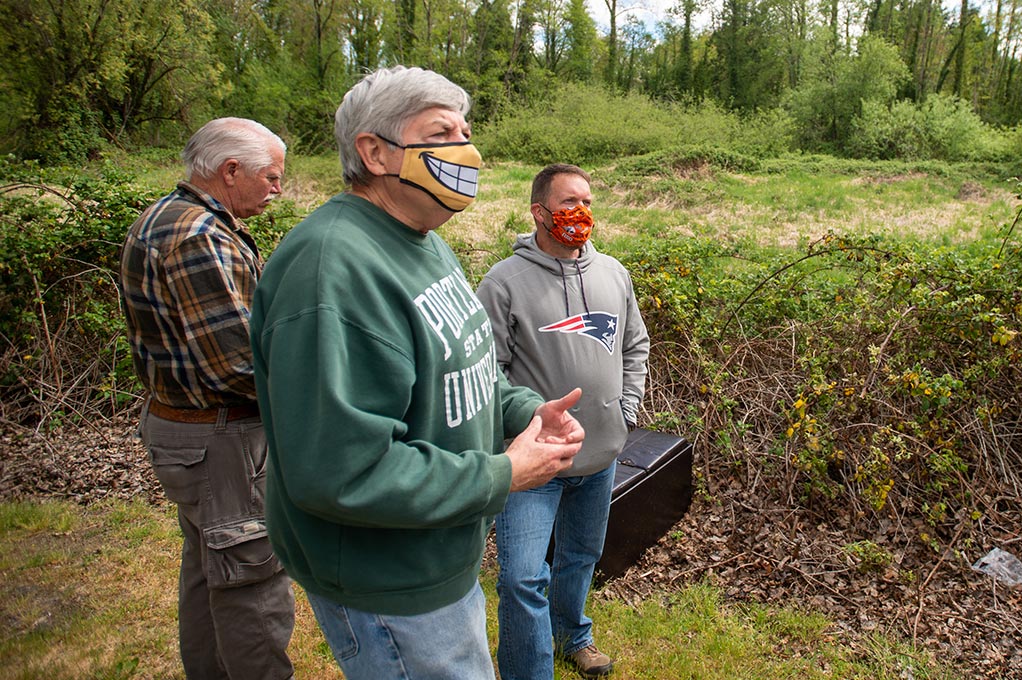
The presence of a wetland between the two properties does complicate the effort. Not only does digging near a sensitive area trigger state and federal permitting requirement, but it also negates the usefulness of some modern technology, including ground-penetrating radar. But Foundation members are determined to move forward with the exploration.
“I think we’ve made a lot of headway, we’ve got a few more possibilities to get more data and information and we’ll just keep everybody on the same loop on this,” Burns said. “But I think the potential here, for science on the one hand, and for Tualatin number two, I think, is absolutely great.”


